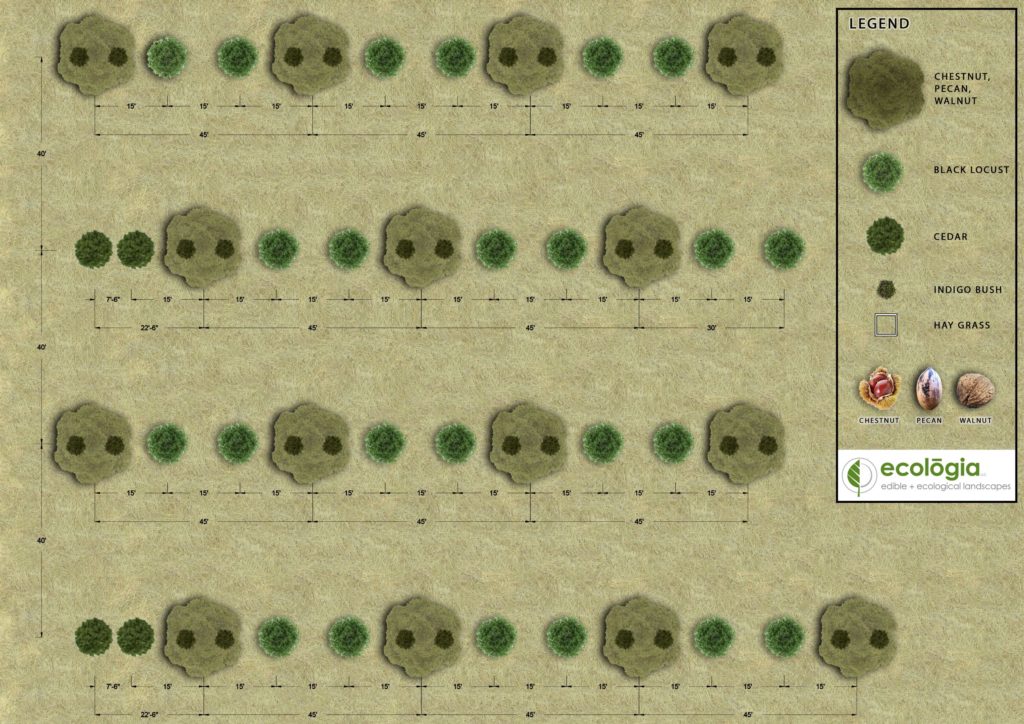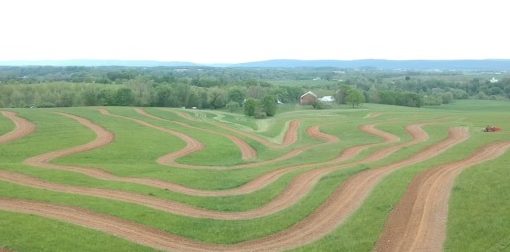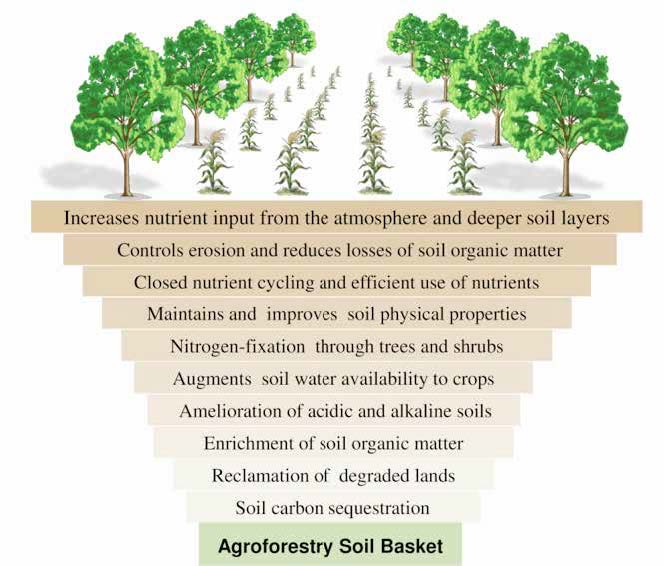The culture of working with trees has a myriad of relationships and benefits key to our times.
The practice of “agroforestry” has been in play since the origins of humankind, supporting; shelter, fodder/animals/hunting, fruits, nuts, mushrooms, herbs, water, etc.
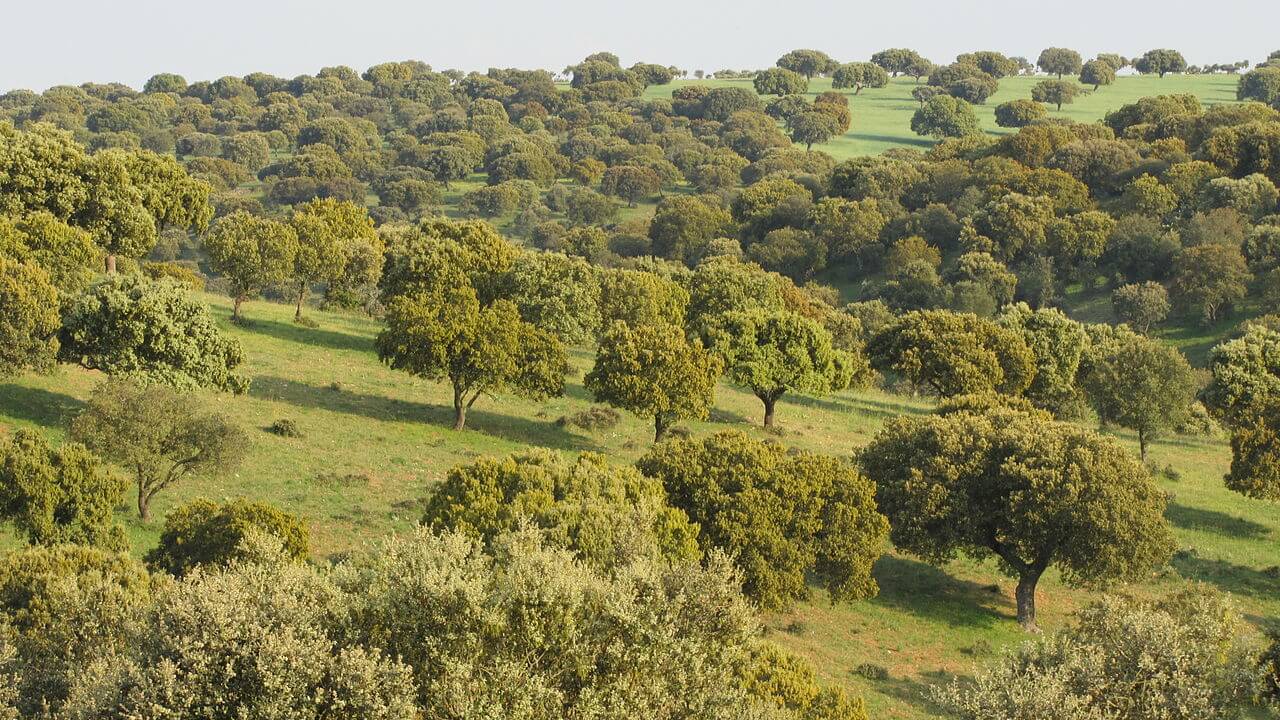
Ancient agroforestry systems have been in place as long as human kind. This image of an oak tree agroforestry system comes from the famed Dehesa farms of northwest Spain where mixed livestock are grazed at low density.
So, what does agroforestry look like today and why do we need it?
The USDA National Agroforestry Center does a pretty good summing up in this bulletin excerpt:
Agroforestry practices support agricultural production and help improve water quality and air quality, soil health, and wildlife habitat. These working trees can also grow fiber, food, and energy. And with the U.S. Census Bureau projecting a population surge to nine billion by 2044, forests and agroforests can help meet the growing demands for food, shelter, medicine, and recreation. —USDA Bulletin, USDA National Agroforestry Center
What is Agroforestry?
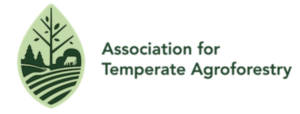 Association for Temperate Agroforestry defines agroforestry as an intensive land management system that optimizes the benefits from the biological interactions created when trees and/or shrubs are deliberately combined with crops and/or livestock. There are five basic types of agroforestry practices today in the North America: windbreaks, alley cropping, silvopasture, riparian buffers and forest farming. Within each agroforestry practice, there is a continuum of options available to landowners depending on their own goals (e.g., whether to maximize the production of interplanted crops, animal forage, or trees).
Association for Temperate Agroforestry defines agroforestry as an intensive land management system that optimizes the benefits from the biological interactions created when trees and/or shrubs are deliberately combined with crops and/or livestock. There are five basic types of agroforestry practices today in the North America: windbreaks, alley cropping, silvopasture, riparian buffers and forest farming. Within each agroforestry practice, there is a continuum of options available to landowners depending on their own goals (e.g., whether to maximize the production of interplanted crops, animal forage, or trees).
Benefits of Agroforestry
The benefits created by agroforestry practices are both economic and environmental. Agroforestry can increase farm profitability in several ways:
-
- The total output per unit area of tree/ crop/livestock combinations is greater than any single component alone*
- Crops and livestock protected from the damaging effects of wind are more productive
- New products add to the financial diversity and flexibility of the farming enterpris
Agroforestry helps to conserve and protect natural resources by, for example, mitigating non-point source pollution, controlling soil erosion, and creating wildlife habitat. The benefits of agroforestry add up to a substantial improvement of the economic and resource sustainability of agriculture.

How to get started with agroforestry?
There are simple/low maintenance layouts to diverse/high maintenance options.
On the simple end layouts can easily graft into existing land use, whether that be hay or annual crops by using mature tree spacing.
Or designs can be more layered and higher maintenance to suit short and mid term economic interests/needs.
Regardless of design intensity, consideration to working the land for passive water harvesting and soil building are highly recommended. This can be in the form of swales on contour combined with Keyline design, as viewed in this Ecologia project with Fox Haven Organic Farm transitioning from hay fields to a nut rich agroforestry system.
To learn more please explore the links above and contact Ecologia to explore consultation on agroforestry design, layout and installation – it is one of our favorite focuses!
info@ecologiadesign.com
or 240.344.5625
Posted In: Edible and Ecological Landscape Design

